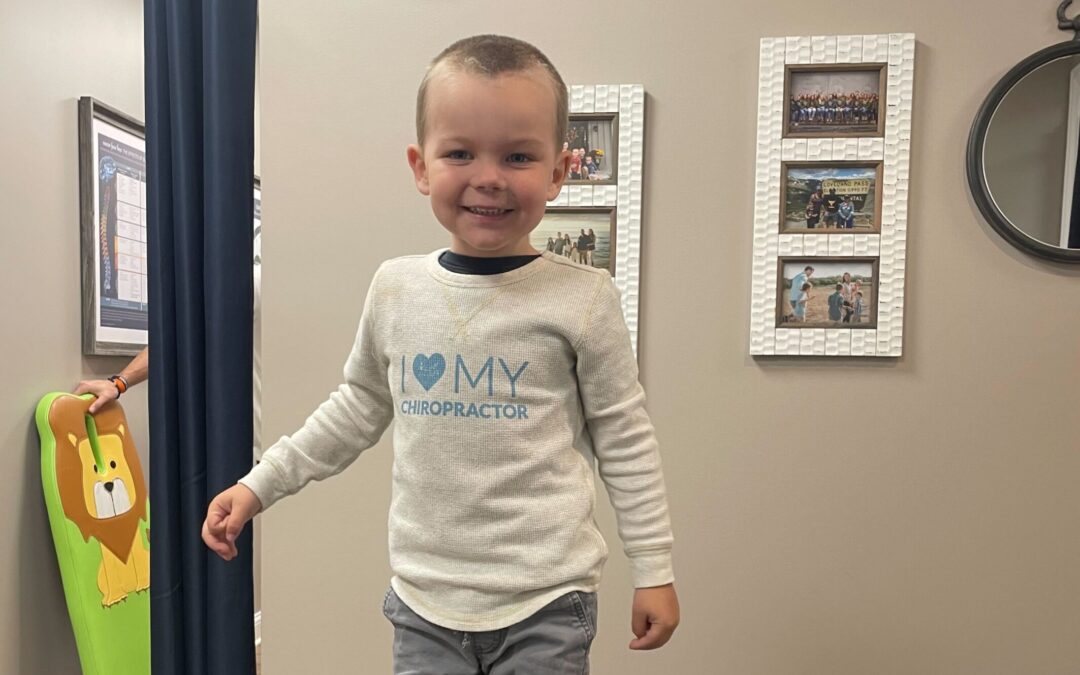The Vagus Nerve, also known as the tenth cranial nerve or CN X, is the longest nerve in the body and plays a crucial role in the function of the autonomic nervous system. It extends from the brainstem down to various organs, including the heart, lungs, and digestive system. Responsible for regulating essential bodily functions like heart rate, digestion, and breathing, it also influences emotional and cognitive processes.
Over the years, researchers have unraveled vagus nerve functions, uncovering the layers of its contribution to our physiological and psychological well-being. The Vagus Nerve acts as a vital link between the brain and body, playing a significant role in overall health.
The Vagus Nerve is sometimes called the “rest and digest” nerve because when functioning properly, it is the main contributor to the parasympathetic side of your nervous system (which is the opposite of your sympathetic nervous system’s “fight or flight” response). 75% of nerve tissue in your parasympathetic nervous system IS the Vagus Nerve.
Nowadays, we know that the Vagus Nerve goes well beyond “rest and digest” and is responsible for major portions of our immune function, social engagement, emotional and behavioral regulation, and so much more. This means that unlocking and activating Vagus Nerve function could be the key to helping countless chronic health conditions improve without the use of dangerous, side-effect-riddled drugs and medications.
There is not a single aspect of what the Vagus Nerve does that is not vital to our health. Ensuring that your Vagus Nerve is being stimulated and functioning at its optimal level is perhaps the most critical aspect of healing for the entire family.
Anatomy of the Vagus Nerve
To grasp the Vagus Nerve’s far-reaching influence, it’s essential to chart its physical journey within the body. It winds its way from the brainstem through the neck and chest, ending in the abdomen. Along this intricate path, it interfaces with various structures, each contributing to diverse functions.
The Vagus Nerve is not a singular entity; rather, it comprises a bundle of fibers carrying an intricate tapestry of signals. This composition includes sensory and motor fibers, each bearing distinct responsibilities that collectively direct the body’s functions.
This nerve is the sensory network that tells the brain what’s going on in our organs, most especially the digestive tract (stomach and intestines), lungs and heart, spleen, liver, adrenals, and kidneys, not to mention a range of other nerves that are involved in everything from talking to eye contact to facial expressions and even your ability to tune in to other people’s voices.
It is made of thousands upon thousands of fibers, operating far below the level of our conscious mind, truly running on “autopilot” the vast majority of the time. This interconnectedness enables the Vagus Nerve to conduct a symphony of responses that adapt to the body’s ever-changing needs.
The Vagus Nerve’s Role in the Autonomic Nervous System
The Vagus Nerve operates within the autonomic nervous system, a division that directs involuntary functions. This system oversees critical bodily functions like heart rate, digestion, and respiratory rate.
The autonomic nervous system comprises two branches: the parasympathetic and the sympathetic. The Vagus Nerve primarily influences the parasympathetic functions associated with the rest and digest responses, as previously mentioned.
The Vagus Nerve sends information from your organs to your brain. In the past, it was studied as something that can counteract the sympathetic nervous system, which does the opposite thing. The Vagus Nerve is a big player in this balancing act.
As Neurologically-Focused Pediatric Chiropractors, we know firsthand that when the Vagus Nerve is damaged or not working properly, the immense struggles and health challenges it can cause for a child – even leading to what we know are Vagus Nerve Disorders. Our entire focus of care is to address subluxation – which, when present, can cause significant dysfunction within the Vagus Nerve and autonomic nervous system.
Because of its positioning and role, it is evident that the Vagus Nerve is susceptible to injury during birth trauma, such as c-sections, vacuum extractions, and forceps. It holds a prominent role in a persistent condition known as dysautonomia.
Combining all these elements, when subluxation is present, there is a reduction in the proprioceptive signals transmitted from the brain and nervous system. Consequently, this creates an environment where heightened nociception gains entry. Nociception refers to the transmission of unpleasant, stressful, and possibly damaging stimuli to the central nervous system. These occurrences prompt the nervous system to shift into a state of heightened alertness known as dysautonomia, recognized as the sympathetic fight or flight response.
When there is subluxation present, continually stimulating the sympathetic nervous system, and at the same time the Vagus Nerve has been injured, damaged, and thus suppressed, the most severe cases of dysautonomia then set in and can lead to a host of both acute and chronic health challenges.
Vagus Nerve and Physical Health
The Vagus Nerve exerts its influence over a multitude of bodily functions, as we now know. Among these, its impact on digestion, heart rate regulation, and respiratory function stands out as particularly crucial.
The journey of food from plate to stomach involves a series of complex processes orchestrated by the Vagus Nerve, which stimulates digestive enzymes, promotes stomach contractions, and ensures optimal nutrition absorption.
Our heart’s rhythm is not left to chance – it’s guided by Vagus Nerve function and control. Through its parasympathetic influence, the Vagus Nerve keeps heart rate in check, modulating the balance between sympathetic and parasympathetic responses. This equilibrium is pivotal in maintaining cardiovascular health.
The Vagus Nerve’s reach extends to the very rhythm of our breath. It directs the ebb and flow of respiration, ensuring our lungs exchange oxygen and carbon dioxide optimally. Dysfunction in Vagus Nerve signaling can disrupt this, leading to respiratory challenges.
The Vagus Nerve and Mental Health
The Vagus Nerve also bridges the gap between mind and body, playing a significant role in behavioral and emotional well-being. A properly functioning Vagus Nerve can mitigate anxiety by activating the parasympathetic response, promoting a sense of calm even in the face of stressors.
Compromised Vagus Nerve function can also contribute to the development of depression and other neurological challenges. Unrelenting stress takes a toll on our bodies and brains, which is why we need the Vagus Nerve to be operating at its fullest potential.
The Vagus Nerve, Inflammation, and Chronic Illness
As we delve further into Vagus Nerve function and it’s influence, we uncover its profound connections to the regulation of inflammation, chronic illnesses, and neurological challenges. The Vagus Nerve’s role in health extends beyond its regular functions; its dysfunction has been associated with various diseases common to both children and adults.
Disorders ranging from gastroparesis to autism to seizures have been linked to compromised Vagus Nerve activity. Additionally, challenges like ADHD and anxiety definitely have connections to Vagus Nerve dysfunction, as do lesser known but also quickly rising challenges like PANDAS Disorder and, most especially, POTS Syndrome.
Inflammation, often an underlying factor in chronic illnesses, is also subject to the Vagus Nerve’s modulation and control. Proper Vagus Nerve function can serve as a potent anti-inflammatory agent, damping the body’s inflammatory responses. Dysfunction can disrupt this critical regulatory mechanism, contributing to a whole host of inflammatory conditions.
How to Care for the Vagus Nerve with Neurologically-Focused Chiropractic Care
It is an exciting time for PX Docs due to the increasing recognition of the significance of the Vagus Nerve, and we want every family to know the potential benefits and impact Neurologically-Focused Chiropractic adjustments have on its function.
Our Neuro-Tonal chiropractic adjustments first work to release that built-up stress and stuck sympathetic dominance, keeping the nervous system in a perpetual state of protection, inflammation, and dysregulation. From there, we work to address the subluxation, dysfunction, and dysautonomia head-on with continued adjustments that are designed to activate and stimulate the Vagus Nerve and parasympathetic nervous system so that, over time, we can rebuild and restore optimal neurological function and autonomic balance.
Not only is this Neurologically-Focused and Neuro-Tonal approach unique to chiropractic and healthcare as a whole but perhaps the most exciting component of the care model today is that we can literally track the activation and restoration of Vagus Nerve function via an incredible piece of technology called Heart Rate Variability (HRV).
These HRV Scans, along with two (2) other sets of scans called NeuroThermal and NeuroSpinal EMG, makeup what are called the INSiGHT Neurological Scans and are a direct measurement of Vagus Nerve function, neurological dysfunction, and dysautonomia. Once a patient’s baseline HRV and neurological function are determined, a fully personalized and customized care plan for each individual patient can be generated.
Our trained and ready network of PX Docs utilizes this incredible technology and uses the same 5-step Clinical Process to assess Vagus Nerve function and the autonomic nervous system as a whole, something not offered anywhere else in healthcare.
Scheduling an appointment at a PX Doc office is the essential first step to assessing the Vagus Nerve function for either yourself or your child and could be the key to unlocking and improving years of chronic health struggles and suffering.
Unleashing the Power of the Vagus Nerve
Undoubtedly, the Vagus Nerve stands as a central figure when it comes to human health. From regulating digestion to shaping our emotional well-being, its influence touches virtually every aspect of our lives. This is why enhancing Vagus Nerve function is such a huge part of Neurologically-Focused Chiropractic Care.
If you’re intrigued by the Vagus Nerve’s role in health or suspect that you or your child are struggling with your Vagus Nerve function, don’t wait to check out our directory and reach out to a local PX Doc office near you.
Our PX Docs understand Vagus Nerve function and everything connected to it better than any health practitioner out there. Let us help you harness the power of the Vagus Nerve for a healthier, more balanced life.





